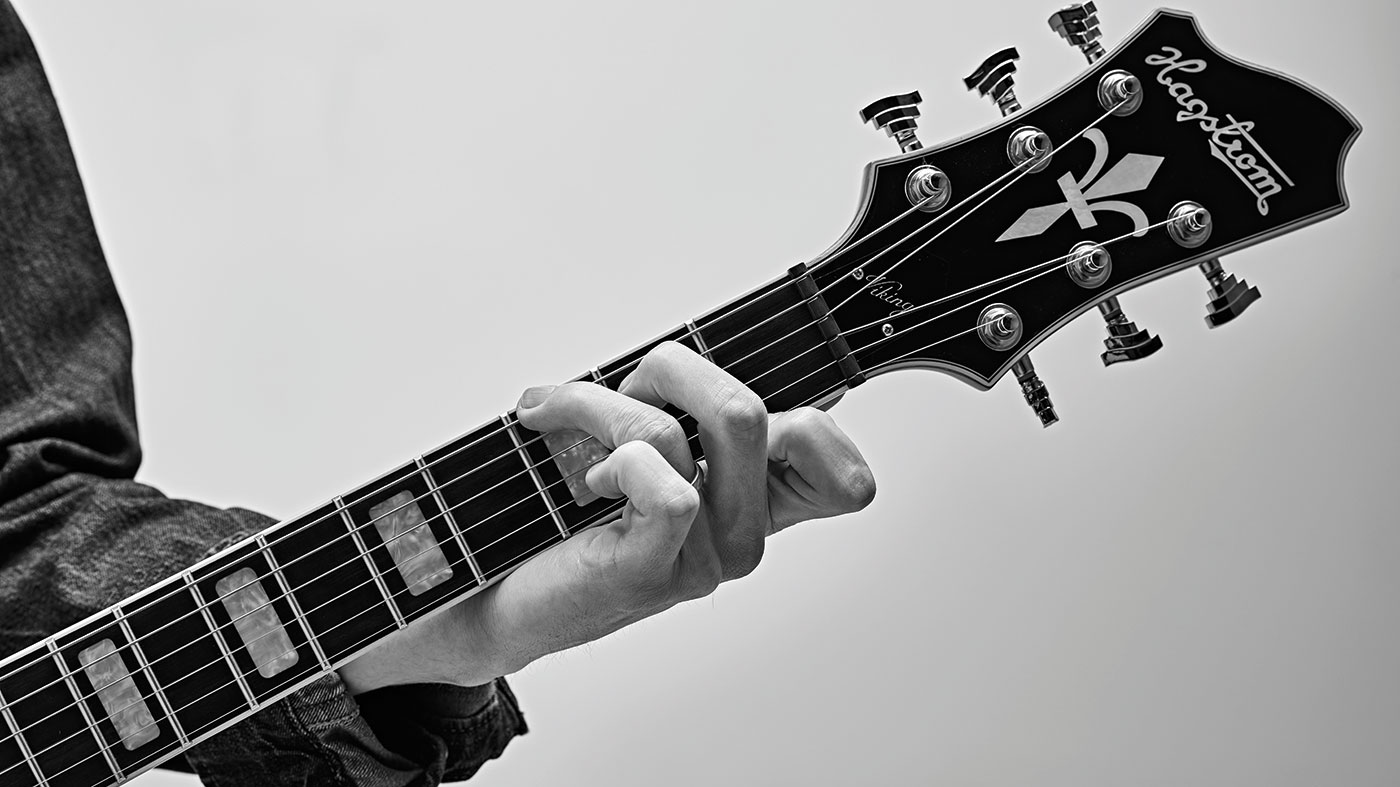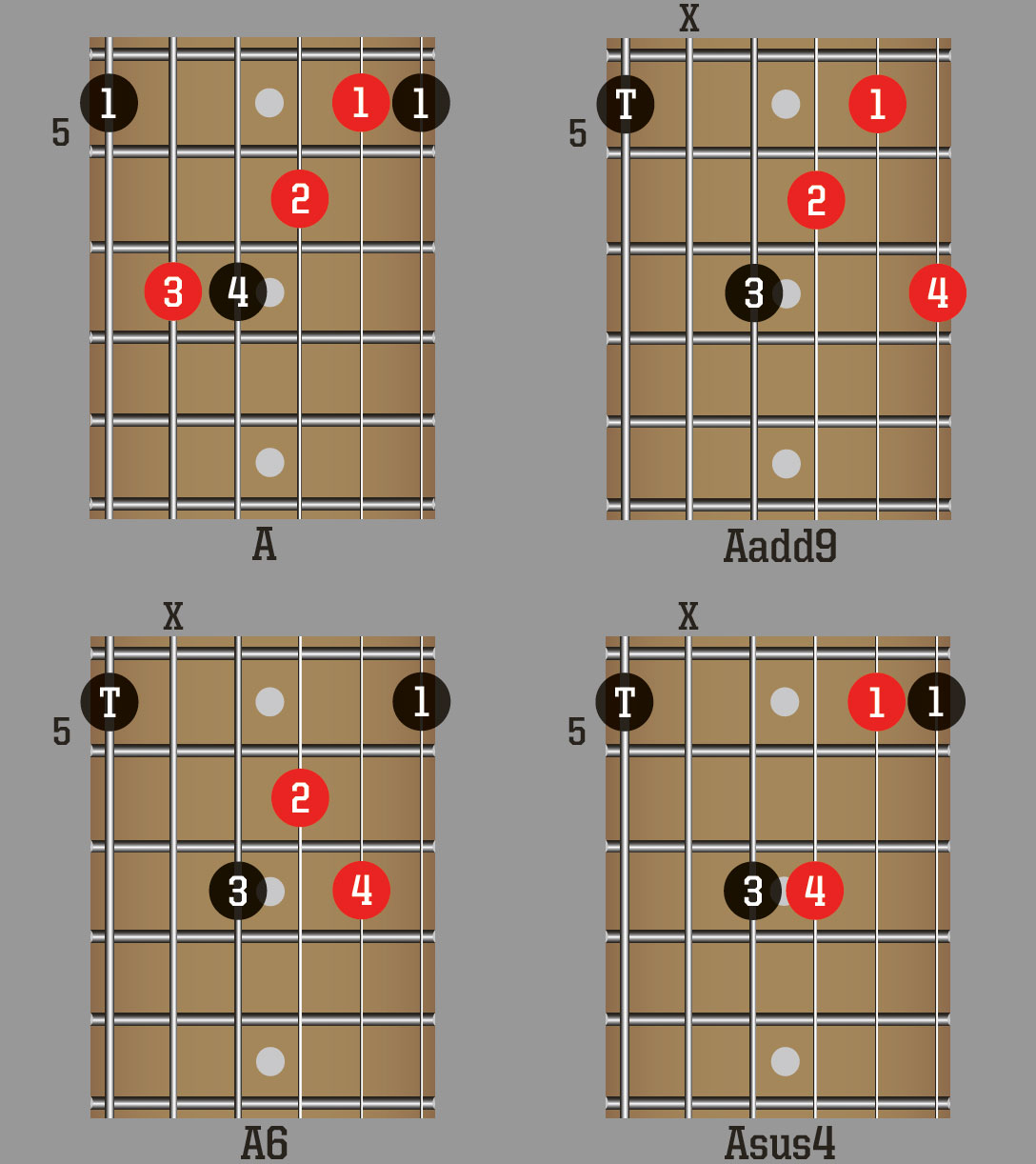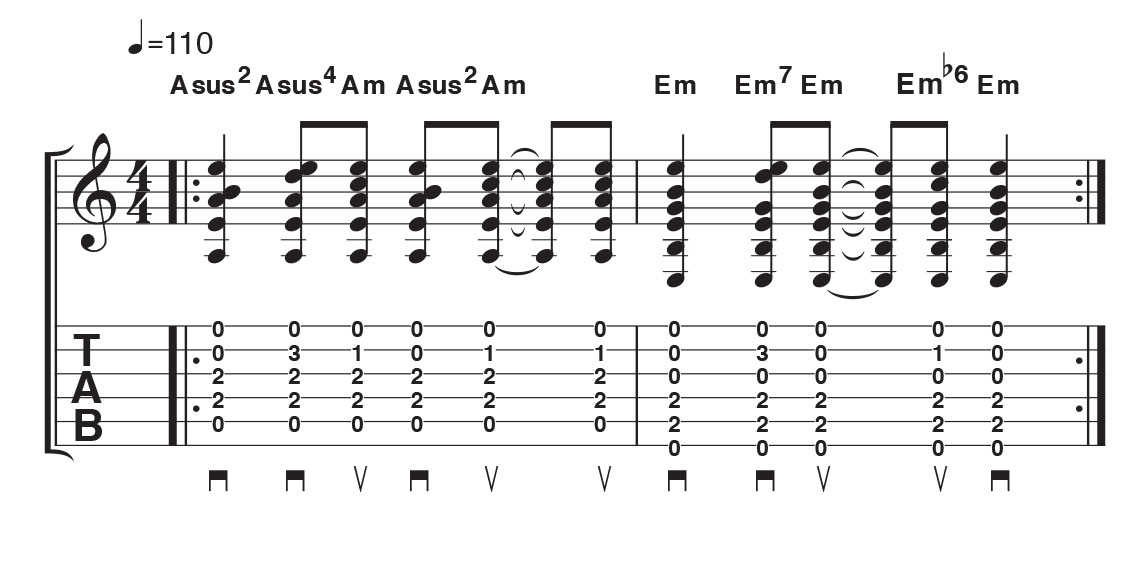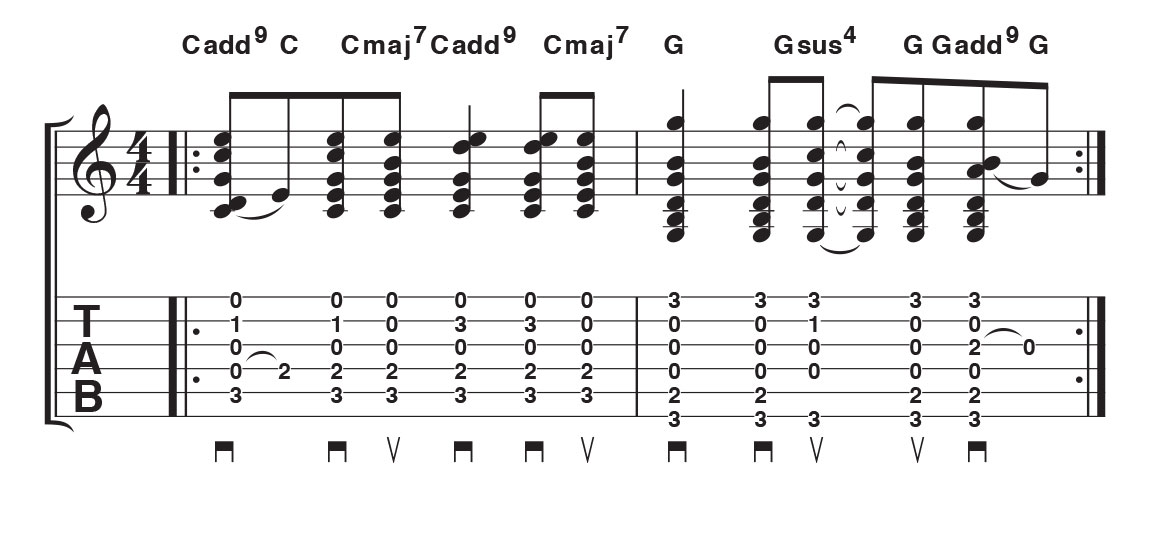Take the next step in your chord progressions with these colourful shapes
Add some variety to basic chord shapes

Sweeter guitar chords are just a finger move away. Improve your sound with this easy lesson...
“I want to create more colourful progressions.”
This is a challenge most novice guitarists will face. Although there are thousands of chords to learn on the guitar, it’s easy to get started.
“Easy is good! I don’t think I’ll be able to learn loads of new chords!”
The best way to start is to try adding or taking away notes from chords you already know
The best way to start is to try adding or taking away notes from chords you already know. Start with a chord that leaves you a free finger, or a shape you can play with at least two fingerings.
“How does an open Am chord strike you?”
Perfect. Play Am with your first, second and third fingers, you can just take your first finger off the second string and you’ll be playing Asus2. Alternatively, put your fourth finger on the 3rd fret of the second string for Asus4.
Want all the hottest music and gear news, reviews, deals, features and more, direct to your inbox? Sign up here.
“Those two chords are really easy!”
Great! It’s easy to experiment. Take a look at our first tab example that opens with these two sus chords before expanding into E minor.
“Whoa, there are lots of changes. It’s almost too quick to play along. Help!”

Try jamming along on Am and Em without any changes at first. The idea is to show you that there are lots of easy alternatives at your disposal. Strum in time with the music and add one or two changes as it starts to feel natural.
“I’m still not getting the changes down. What could I be doing wrong?”
Make sure you’re using a suitable fingering - it’ll make a big difference! For example, in bar 2 you’ll need to play Em with your second and third fingers. This leaves your other fingers free to play at the 1st and 3rd frets.
“Okay, I’m getting there. What shall I do next?”
Move on to the second tab example, which is based around open C and G chords. Again, there are several chords in a short space of time, giving the music a much richer sound than a simple C-G progression.
“Presumably, using the right fingers is crucial again, right?
Exactly. If you’re using the best fingering for C and G the changes should be fairly easy. Finally, remember to experiment with your own ideas. You’ll doubtless hit some clangers but inspiration won’t be far away!
Time at the barre…
Easy variations on the staple E shape barre chord
Hopefully, now you understand how a more colourful sound is just a finger move away from the open chords you know. And this simple process works with barre chords too! Have a go at the A chord shown here, then try out three variations. Notice the Hendrix style ‘thumb over the neck’ technique - if it’s too much of a stretch just don’t play the sixth string.
Ex 1. Am and Em
There are six easy chords in this 2-bar rhythm part. Identify the shapes in the tab and practise them slowly before trying out the strummed rhythm.
Ex 2. C and G
Make sure to play the G chord with your second, third and fourth fingers. This keeps your first finger free to play the new notes in Gsus4 and Gadd9.
Total Guitar is Europe's best-selling guitar magazine.
Every month we feature interviews with the biggest names and hottest new acts in guitar land, plus Guest Lessons from the stars.
Finally, our Rocked & Rated section is the place to go for reviews, round-ups and help setting up your guitars and gear.
Subscribe: http://bit.ly/totalguitar



